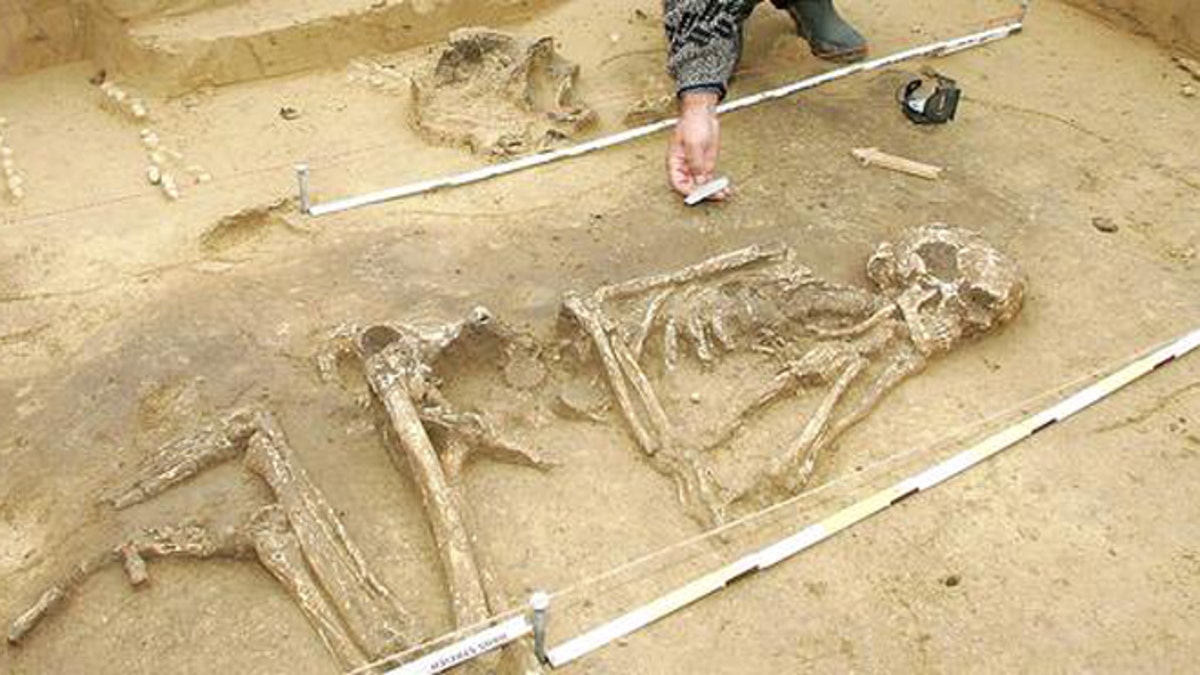
An archaeologist excavating a skeleton. ((AP Photo/Diether Endlicher))
Archaeologists working on Peru’s north coast thought they were excavating a run-of-the-mill Colonial burial site, until they came across one very strange skeleton.
Out of the 500 skeletal remains found at the cemetery of the Chapel of the Divino Niño Serranito de Eten, the bones of one teenage girl stood for the simple reason that she had a lot more of them than anyone else in the burial site.
After careful study, the scientists, including bioarchaeologist Haagen Klaus of George Mason University, ruled that the dozens of extra bones and teeth found in her abdominal cavity were part of an ovarian teratoma - or what has been labelled an "evil twin" tumor. While the teratoma may not have not have been the cause of her death, the large tumor probably made her look like she was pregnant and may have factored into her early death.
The teratoma, which in Greek means "monstrous tumor," usually presents itself as a cyst composed of multiple types of cells and grow into a variety of different tissues, including bone, teeth, hair, and organs. A word of warning, if one is thinking of doing a Google Image search for teratoma make sure there are no small children in the room or be prepared for a lot of crying and nightmares.
"We know that this type of tumor is fairly common in modern populations, but we have so few examples from prehistory," bioarchaeologist Allison Foley, who has worked on diagnostic criteria for identifying teratomas in archaeological remains, told Forbes.
While modern medicine sees a surprising – and scary – amount of these cases, evidence of them in in the past is practically non-existent. Archaeologists have discovered only two previous cases: one from the late Roman Spain, and one from imperial-era Rome.
Scientists say that one reason for the lack of teratomas discovered in ancient history is that they are easily mistaken for fetal remains given the teeth and bone remains that can form in the tumor, but archaeologists say there is no mistaking what was found in the Peruvian girl’s grave.
"This case is pretty unambiguous thanks to the cluster of 37 teeth found in the abdominal cavity," Foley said. "Even beyond their unusual placement, the teratoma teeth are twisted and malformed."
